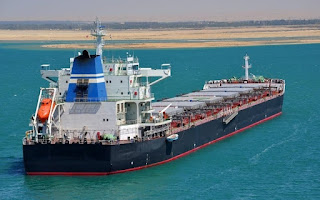Anahuac Transport Explains Break Bulk Shipping

Anahuac Transport / Bulk Liquid Transport
Anahuac Transport, an industry leader in liquid bulk transport, discusses break bulk shipping.
According to
Anahuac Transport, a company dedicated to liquid bulk transport, approximately
90 percent of all goods globally are shipped by sea vessels. Of this, 70
percent is containerized cargo. In fact, almost all end consumer purchases were
likely aboard a container vessel at some point.
In 2019, the
maritime trade volume was around 11 billion tons, 2.7 percent higher than the
previous year. Experts predict the average growth rate between 2019 and 2024 to
be 3.4 percent due mainly to the growing global market.
Anahuac
Transport explains, however, that not all cargo shipped to retailers or end
customers is placed in containers. For example, an important part of the
shipped goods is raw materials for the industry, chemicals, crude oil, or
construction materials.
General cargo
is a load that is transported in defined load units. This means the load
is unitized. That
includes break bulk.
Break bulk
pertains to load carried in bags, pallets, boxes, and drums; neon bulk, such as
lumber and paper; and containerized cargo. Containerized cargo includes all
types of cargo shipped in a container unit.
The break bulk
market makes up a huge segment in sea transportation. Turbines, heavy
machinery, or wind farmers are carried on break bulk vessels all over the
world.
Break bulk is
specifically any individual piece of load that does not fit into a container.
This includes cargo types such as metal drums or ingots, grain bags, or large
individual objects – except for vehicles.
Anahuac
Transport notes that there are two kinds of break bulk: project cargo and heavy lift cargo.
Project cargo
refers to the needed load for a construction project such as a port terminal.
At the destination, the vessel provides goods used for the construction project,
and because of this, entire installations can be constructed. This is extremely
useful in emerging countries.
Heavy lift cargo refers to transported goods such as turbines, cranes, blades, or other types of big machinery. Heavy-lift vessels typically carry these kinds of equipment. Furthermore, multipurpose vessels are usually used for smaller break bulks.
AnahuacTransport utilizes a fleet of cargo tank trailers to haul 100 percent liquid bulk products. It serves the petrochemical and refining industries and 48 states in the U.S. Learn more about the bulk transport industry from Anahuac Transport by visiting this page.
References:
https://nifcargo.com/difference-between-general-cargo-and-bulk-cargo/
https://logisticselearning.com/main-cargo-types/
https://www.container-xchange.com/blog/break-bulk-shipping/

Comments
Post a Comment